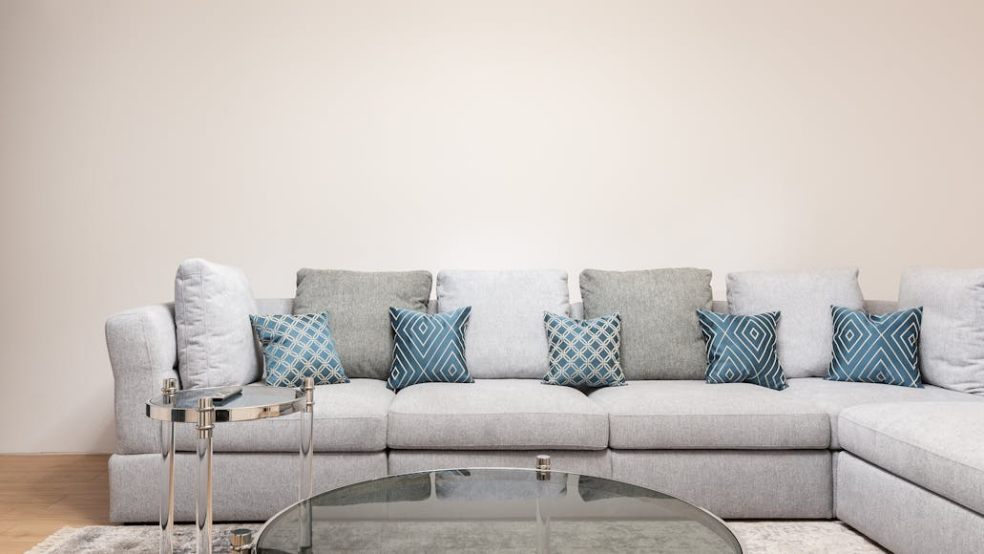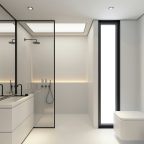
Interior Design Trends 2025: The Return of Contemporary Classicism
Interior design, like fashion, is cyclical. What was once dismissed as outdated often returns years later with renewed elegance and purpose. In 2025, we’re witnessing the resurgence of a refined and storied style: contemporary classicism. This trend brings the balance, symmetry, and ornamentation of classical interiors into conversation with modern simplicity and function.
Contemporary classicism isn’t about replicating the past. It’s about drawing on its timeless proportions, noble materials, and sculptural details—then distilling them into clean, thoughtful, and serene environments. Gone is the heaviness of traditional décor. In its place: light-filled spaces that blend historic codes with a contemporary rhythm, where moldings meet minimalism, and balance is achieved through restraint, not excess.
Noble Materials: A Quiet Luxury Renaissance
One of the pillars of this revival is a renewed appreciation for noble, enduring materials. Marble, in bold veined patterns, takes center stage again on tables, countertops, and fireplace mantels. Brass, walnut, velvet, travertine, oak—these materials bring warmth, texture, and depth that synthetic surfaces can’t replicate. In 2025, true luxury is no longer about price, but about authenticity and permanence.
Natural materials engage the senses. You feel the cool density of stone, the softness of aged leather, the gentle grain of wood. These elements ground a space, offering tactile richness in a world of screens and speed. They also speak of intention: a desire to invest in pieces that age gracefully, rather than chase trends destined to fade.
Form, Rhythm, and Proportion: Classical Principles for Modern Living
Classical design has always been rooted in a philosophy of harmony. Proportions matter—not because of style, but because they create balance and visual peace. In 2025, designers are returning to these principles: symmetrical layouts, arched doorways, subtle repetition of architectural features, and thoughtfully framed views.
Color palettes soften to let form and texture shine: creamy whites, warm greys, dusty taupes, and deep olive greens dominate. Cornices and wall paneling return, but in more streamlined, architectural versions. These elements are no longer decorative for decoration’s sake—they’re structural, considered, and deliberate.
Arte del Lusso: Where Classic Heritage Meets Contemporary Design
A standout example of this trend’s maturity is Arte del Lusso —a Spanish brand that perfectly bridges the gap between classical inspiration and modern refinement. Their curated catalog is a masterclass in balance: sculptural furniture pieces, neoclassical references reinterpreted with modern lines, and a sensibility that values both beauty and durability.
Whether it's a console that evokes the elegance of a Doric column, or a velvet sofa that channels Parisian apartments while maintaining minimal form, Arte del Lusso offers more than décor—they offer a lifestyle philosophy. Their use of noble materials, refined finishes, and architectural silhouettes reflects a quiet confidence, a rejection of the disposable, and an embrace of timeless design.
Each piece tells a story of legacy and craft, but always through the lens of contemporary living. Their spaces breathe, combining old-world charm with modern airiness.
More Than Styling: Spaces That Breathe and Inspire
A common pitfall when revisiting classical elements is falling into theatricality. Contemporary classicism avoids that by focusing on essence rather than imitation. The goal is not to create a museum piece or a Versailles replica, but to extract the calm, symmetry, and material depth that defined historical interiors—and bring them into homes built for modern life.
This trend isn’t about cluttering a room with artifacts. It’s about anchoring a space with a single, striking statement: a sculptural table, a hand-carved frame, a bespoke chandelier. Less is still more—but this time, it’s less with soul.
Designers are reimagining classic codes with restraint: subtle ceiling roses, fluted detailing, linear moldings, and generous negative space. The result is a serenity that goes beyond style—it becomes a way of being.
The Power of Contrast: New Meets Old
Another key dimension of contemporary classicism is the art of contrast. Pairing antique and vintage elements with avant-garde artwork or contemporary lighting creates tension and richness. A Louis XVI-style chair next to an abstract sculpture; a classic herringbone floor beneath ultra-modern recessed lighting. These combinations express personality and taste—never over-designed, always intentional.
The layering of time periods creates homes that feel collected, not curated. It resists the sameness of fast interiors and celebrates the journey of finding meaningful pieces. Brands like Arte del Lusso are invaluable in this process, as they source pieces that already exist in this middle ground—timeless in form, current in execution.
Emotional Interiors: A Movement Beyond Aesthetics
At its core, this trend responds to something deeper: a desire to slow down, reconnect, and live with meaning. We are no longer satisfied with beautiful spaces alone—we crave spaces that move us, reflect us, and comfort us.
Contemporary classicism aligns perfectly with this shift. It offers grounding structure without rigidity, warmth without clutter, elegance without arrogance. It helps create homes that feel sacred, restorative, and whole. The tactile richness of marble, the curved line of a classical arch, the glow of antique brass—these are not just aesthetic choices, but emotional cues.
Designers and homeowners alike are gravitating toward interiors that encourage presence: reading corners flooded with light, materials that improve with age, layouts that frame silence rather than noise.
Conclusion: A Return to Timelessness
The return of contemporary classicism is more than a stylistic cycle—it’s a cultural shift. It speaks to our hunger for depth in an era of distraction. It’s a celebration of craftsmanship, balance, and a kind of inward luxury that’s less about showing off, and more about creating spaces that truly feel like home.
As brands like Arte del Lusso continue to champion this refined vision—where the past isn’t romanticized but reimagined—we’re reminded that good design is never really old or new. It’s simply timeless.













